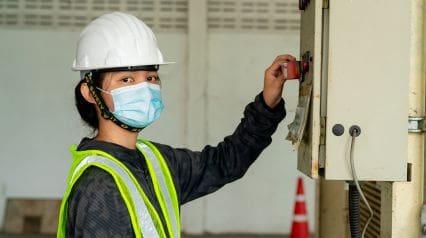What is ISO 7000:2019?
ISO 7000:2019 is an international standard for registered graphical symbols placed in equipment to indicate how to use it correctly and safely. It provides a set of standardized symbols that are easily recognized and understood across different languages and cultures.
The symbols in ISO 7000 are designed to convey information quickly and accurately without the need for words or language translation. This makes them particularly useful when language barriers exist, such as in emergencies or global industries.
Standardizing symbols can guarantee the clear and efficient transmission of crucial information, improving safety and productivity across different sectors.
Benefits
ISO 7000 standard on safety symbols can bring a lot of benefits to businesses, including:
- Creates consistency – ISO 7000 symbols help businesses ensure consistent product labeling and signage across countries and languages. This can help to avoid confusion and increase customer trust.
- Boosts international recognition – ISO 7000 is recognized globally, which means that products and signage using these symbols can be easily understood and recognized by people worldwide. This can be especially beneficial for businesses that operate in multiple countries or sell products globally.
- Enhances communication – Using standardized symbols ensures that everyone can understand the symbol’s meaning, regardless of language or culture. This can improve communication between different people and organizations.
- Improves efficiency – Utilizing ISO 7000 symbols can result in cost and time savings for businesses, particularly those with international operations or product sales, as it diminishes the need for translation and design efforts.
- Contributes to safety – ISO 7000 symbols can indicate important safety information, such as warnings about hazardous materials or instructions for safe use. By using these symbols, businesses can help to prevent accidents and injuries.
Components of ISO 7000
Various industries use the graphical symbols from ISO 7000, such as electronics, medical devices, and transportation. The standard consists of over 1,600 symbols, each with a unique identifier code and a brief description of its meaning.
Several components comprise ISO 7000, including the symbol, title, function, reference no., registration date, and status. Below is a discussion of all of them.
- Symbol – This is the graphical representation of the function. It should be simple and easy to recognize, as it is the primary means of conveying the meaning and purpose of the object.
- Title – Brief description of the symbol and its intended purpose. It’s concise and easy to understand.
- Function – A more detailed explanation of the symbol’s meaning or purpose. It includes enough information to help the user to understand how or why it should be used.
- Reference number – A unique identifier for the symbol that ISO assigns.
- Registration date – The date the symbol was registered with ISO.
- Status – Whether or not the symbol is active or inactive in the ISO 7000 standard. Inactive symbols may still be used, but they are no longer part of the official graphical symbols recognized by ISO.
Improve your EHS Management
Cultivate a safe working environment and streamline compliance with our EHS solutions.
Explore nowTypes of Graphical Symbols Covered
ISO 7000 covers various graphical symbols, including those used to represent electrical and electronic components, mechanical components, safety signs, etc. Some of the specific types of symbols covered by ISO 7000 include:
Equipment
Equipment symbols represent various types of equipment used in industrial, manufacturing, and engineering applications. Some examples of equipment symbols covered by ISO 7000 include symbols for pumps, valves, compressors, generators, motors, and fans.
Safety Signs
Safety signs are used to indicate potential hazards and provide important safety information. ISO 7000 includes various symbols for warning signs, safety precaution signs, fire protection signs, and more.
Public Information
A set of pictograms and symbols that convey public information, such as provisions for disabled or handicapped persons. This symbol indicates the way into a building and facilities accessible to and useable by all persons whose mobility is restricted, including wheelchair users.
Earth-Moving Machinery
These symbols identify different earth-moving machines, such as bulldozers, excavators, and other heavy equipment. These symbols should be displayed prominently on the machinery to ensure proper use and safety.
Directional Flow
Directional flow symbols indicate the direction of a flow, for example, the direction in which to operate a machine or the order in which the liquid should flow. ISO 7000 includes various directional symbols, such as arrows and circles, that indicate how a machine should be oriented or rotated.
Application
Application symbol signs are used to identify products and services and provide instructions. Examples of application symbols covered by ISO 7000 include symbols for batteries, fuel tanks, and signs indicating the acceptable disposal methods of hazardous materials.
Chemical
Chemical symbols identify hazardous chemicals and warn of their potential risks. ISO 7000 includes chemical symbols for common hazardous substances, such as acids and flammable liquids. The symbols should be visible and legible to ensure proper safety precautions are taken when working with these materials.




